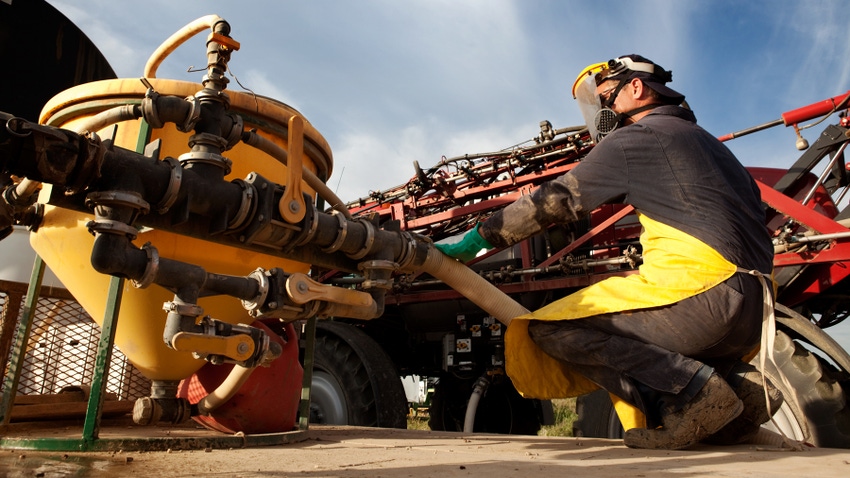
It may be a tough time financially on your farm, but when it comes to working around agriculture chemicals, don’t shortchange yourself and your farm employees. Buy the right protective gear — it is a matter of health and safety.
Agriculture chemicals can cause serious skin and eye irritation. According to the Upper Midwest Agricultural Safety and Health Center, some chemicals create immediate health concerns, while others leave lasting internal damage to organs such as your lungs. So, you and your farm employees need to be safeguarded from ag chemical exposure.
University of Missouri Extension explains the types of personal protective equipment, or PPE, that should be in your machine shed this spraying season:
Gloves. Pesticide labels generally specify the type of gloves needed. Choose chemical-resistant unlined gloves during pesticide handling and application. Cotton, leather and canvas gloves do not provide protection when handling and applying pesticides.
Body protection. To protect the front of your body, wear a chemical-resistant apron when mixing, loading and cleaning equipment. For some products, an apron is required, along with other protective clothing to protect against spills. Make sure aprons are made from chemical-resistant PPE materials, as they are more protective than cotton and polyester aprons. Also, while disposable coveralls are a cheaper option and therefore a popular choice, they should not be used repetitively. Rather, discard them at the end of each workday.
Footwear. While some pesticides can be used with simple shoes and socks, others require the applicator to wear “chemical-resistant footwear plus socks." Chemical-resistant boots offer the greatest protection with their natural rubber, which may be coated with polyurethane, polyvinyl chloride or blends of these materials. Shoe covers can also be used over footwear that is not chemically resistant, such as fabric and leather shoes.
Eye and face protection. Excluding the full-face respirator, there are three basic options for protective eyewear — chemical splash goggles, face shields and shielded safety glasses. Safety glasses provide minimal protection and should only be used when handling the least toxic pesticides. Chemical splash goggles are the next level in eye protection. Face shields when used with safety glasses or goggles offer the greatest protection against pesticide splashes.
Respiratory protection. Only use respirators approved by the National Institute of Occupational Safety and Health and the Mine Safety and Health Administration. Approved respirators will carry a "TC" number prefix. This validates they have been tested and certified for a specific level of protection. There are two types of respirators: air-purifying and air-supplying. Air-purifying respirators remove contaminants through chemical cartridges or mechanical filters. The chemical cartridges are filled with activated carbon, which has a very high absorption capacity for gases and vapors. An air-supplying respirator supplies an independent source of breathable air. It is used in enclosed areas where oxygen is deficient, or the applicator is exposed to high concentrations of very toxic pesticides.
To learn more about personal protective equipment, refer to University of Missouri Guide No. 1971 at https://extension.missouri.edu/publications/g1917.
Read the label
Every pesticide product label contains specific information about necessary clothing and equipment to be worn while mixing, loading and applying that product. That label is the law.
This information may be found in the "Precautionary Statements" section of the label. Farmers must read it and wear the appropriate protective equipment.
For more detailed information about chemical and physical hazards associated with a specific pesticide, read the safety data sheet for that product. The SDS is available from your pesticide dealer.
Read more about:
Rural HealthAbout the Author(s)
You May Also Like






